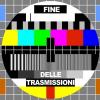Dear CRM Creators,
It’s me again, your humble yet critical follower. I know you’ve tried hard for many years to be the software that every business needs. I know you’ve really tried to make it work, but even after all these years, more than half of businesses are still breaking up with you.
kid letter
It’s not easy being attractive to everyone at the same time; just ask the guys who make generic construction project management software. But, you know what? It’s a lot easier to be attractive if you actually build yourself for what businesses really need.
What Do Businesses Really Need in CRM Software?
Well, for one thing, businesses don’t need a NeverEnding Story of features, even if they come with a bonus Luck Dragon. You’ve tried for many years to fight the ‘who has the longer feature list?’ battle with every other contender and it’s a win-lose.
You see, you’ve been using those giant, mutating feature lists as your weapon of choice to attract new customers. The problem is, while you’ve been peddling feature lists to new customers, 43% of your existing customers have been realizing they use less than half of the features you sold them on.
But that isn’t even the biggest problem with your bottomless feature lists. The real issue is that having all these features almost always bogs down a system and makes it harder to use. It’s only logical: more features = more buttons = more screens = more training = more confusion.
But you should already know this. Why? Because 72% of all your users said they would trade in all that functionality you hold so highly for a CRM that’s just easier to use. Go figure.
Moving from Features to Ease of Use
I know you’ve put in a lot of work on those features, and you’ve built them for a special portion of your user base who really needed them, but maybe it’s time to rethink the strategy. Maybe instead of selling CRM for features, you sell it as having the right features in a simple-to-use package.
But you have to mean it.
Something that absolutely doesn’t help the industry is to have every single CRM software advertising themselves as “easy to use!” when one look at a screenshot from the software makes your eyes cross.
Listen, if your software just isn’t easy, the first thing you need to do is stop marketing it as such. The second thing? Make it easier.
I know, simplicity is very, very tough, especially in software as complicated as CRM for multiple industries. It’s incredibly hard to structure software to meet everyone’s needs and abilities but darn it, we’ve gotta try!
But let’s go a step further. Because businesses don’t just need to be sold on an easy tool with the right features. They need to know why CRM is important and, to be honest… I’m not sure you’re giving off the right vibe.
Moving from Selling Points to Strategic Purpose
I’ve been around the Internet and I’ve seen marketing from just about every CRM creator out there. You know what the number one way to sell a CRM is?
“With this software you can get in and get stuff done without having to worry about any of it. Use it to get back to what’s really important: making money.”
Of course, it’s usually much more eloquently worded (though not always), but it illustrates a good point.
You’ve been going at this thing the wrong way; selling CRM as a way to get all that pesky customer interaction automated so you can move on to more important things. Wait… get the customer out of the way? But what could be more important than the customer?!
The customer is the source of your business, the life blood, the pot of gold at the end of a sometimes very long, colorful rainbow. Why do we sell our software as a means for companies to forget their customers and move on?
Maybe it’s time to sell CRM for what it always should have been: Customer Relationship Management software. Maybe, instead of pushing a “cookie-cutter” strategy for businesses to employ, we should empower them with tools to enable them to make meaningful relationships to build their success upon.
Is that such a radical concept?
This might sound wild, but I assume we didn’t all build CRM software just to make a profit. We built it because we love helping other companies to be successful. But charging them for features they don’t need and forcing them to more confusion than its worth goes against our purpose and makes us lose sight of what we came here for.
I, for one, came here to help businesses grow through establishing and maintaining strong, loyal relationships with new and existing customers, providing them with all the tools necessary to communicate and perform these tasks with excellence.
And that brings us to what should be the main focus of CRM software.
Relationships (with a capital ‘R’)
You remember that word there in the middle? The one that means CRM software is about relationships, interactions, customer satisfaction, and loyalty?
If you do remember, you certainly don’t make that very clear. In fact, the word “relationships” is rarely seen anymore in CRM marketing. And when it does appear, it’s a passing term that is mentioned briefly, only to be eclipsed by calls to “look at how many features we have in ours!” or “see how much cheaper we are than the other guys!”
This isn’t right and we’re doing a disservice to our users. We’re the ones who need to educate companies on what CRM is all about. We’re the ones who need to teach them how important these relationships are and how our tool helps them achieve that while allowing them to build upon it.
Let’s Turn This Ship Around
Let’s face it, a less than 50% adoption rate consistently over the last two years is just a disaster, and we can’t keep kidding ourselves or blaming our users. If we want them to succeed, we need to do more than create more features and provide intense month-long training sessions:
We need to teach and market CRM for what it is: a tool that helps users to create and maintain mutually beneficial relationships with customers, new and old. Everything else comes second to this main goal.
We need to make simple software, with enough features to cover the needs of businesses without overloading them with options.
Until we can do that right, you might as well get comfortable with the -50%.
Sincerely,
Brad Hodson
















